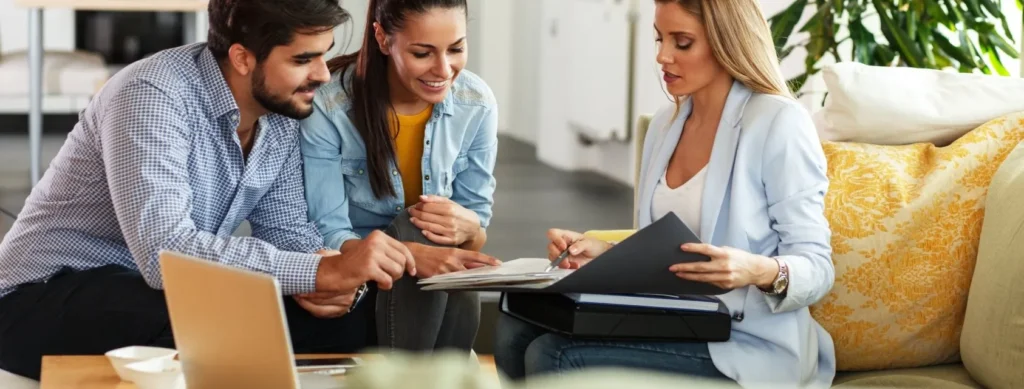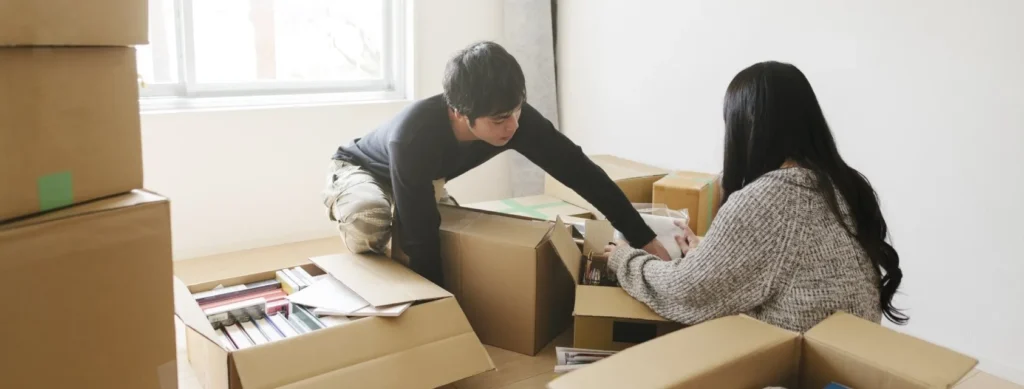From 1 April 2025 the first-time buyer Stamp Duty Exemption was lowered from £425,000 to £300,000. The maximum purchase price for a property that allows a first-time buyer to qualify for the exemption was lowered from £625,000 to £500,000.

What Is Stamp Duty Tax and Is It Refundable?
Here you’ll find everything you need to know about Stamp Duty: what it is, who pays it, exemptions and relief, the rates at which you pay it and more.
This guide has been produced for information purposes only. As a mortgage broker, we’re not able to offer tax advice.
Stamp Duty is a significant part of buying a property. In this guide, we’ll explain Stamp Duty and help you understand how it works.
You’ll have to digest quite a lot of information when you buy a property and Stamp Duty is one of the single biggest costs you’ll face. The amount will vary depending on your circumstances, but we’ll show you how to figure that out.
Contents
What Is Stamp Duty for the UK?
Stamp Duty is a UK property tax you pay when you purchase a property or a piece of land.
Otherwise known as Stamp Duty Land Tax or SDLT, it applies when people buy properties over a certain price in England and Northern Ireland – Scotland and Wales have slightly different schemes but the principles remain the same.
How much you pay in Stamp Duty will depend on the purpose and value of the property you want to purchase, as well as the type of buyer you are – e.g. first-time buyer, previous homeowner, or landlord.
There are a few misconceptions surrounding Stamp Duty, but that’s just because not everyone knows that much about it – especially those who haven’t really dealt with the property market before, or for many years.
So, remember these points:
- The buyer of a property, not the seller, pays Stamp Duty. You never pay Stamp Duty when you sell. You may however have to pay Capital Gains Tax when you sell a property that’s not your main residence
- Stamp Duty exemption areas don’t exist. Whether you qualify for an exemption depends on your situation and the value of your property
- You don’t pay VAT on Stamp Duty as it’s a tax in itself. Also, you don’t pay VAT on the purchase of a property
Is Stamp Duty Tax deductible?
You can’t deduct Stamp Duty from Income Tax, even on buy-to-let properties. However, you can deduct it from your taxable gains to reduce the Capital Gains Tax you pay when you sell a property
How Much Is Stamp Duty Now UK?
Stamp Duty rates and Stamp Duty thresholds for main residences 2025
| Property value | Standard SDLT rate from 1/4/2025 |
|---|---|
| Up to £125,000 | 0% |
| £125,001 – £250,000 | 2% |
| £250,001 – £925,000 | 5% |
| £925,001 – £1,500,000 | 10% |
| From £1,500,001 | 12% |
You pay Stamp Duty at the standard rates if you’re an existing homeowner and are moving home and buying a new property to replace your existing one.
Stamp Duty costs with examples
How much is Stamp Duty on a £650,000 house?
For a £650,000 house, you’ll pay:
- 0% on the first £125,000 of the £650,000 = £0
- 2% on the next £125,000 of the £650,000 (the portion from £125,001 – £250,000) = £2,500
- 5% on the final £400,000 of the £700,000 (the portion from £250,001) = £20,000
- Total SDLT = £22,500
- Total cost (house and Stamp Duty) is £672,500
How much is Stamp Duty on a £300,000 house?
As of 1 April 2025, first-time buyers pay no Stamp Duty on properties up to £300,000. If the purchase price exceeds £300,000 (up to a maximum of £500,000), a 5% rate applies to the portion above £300,000.
Therefore, if you’re a first-time buyer purchasing a £300,000 home, you won’t pay any Stamp Duty.
Non-first-time buyers
For buyers who have previously owned property, the standard SDLT rates apply:
- 0% on the first £125,000
- 2% on the portion from £125,001 to £250,000
- 5% on the portion from £250,001 to £925,000
For a £300,000 property:
- 0% on the first £125,000 = £0
- 2% on the next £125,000 (£125,001–£250,000) = £2,500
- 5% on the remaining £50,000 (£250,001–£300,000) = £2,500
Total SDLT: £5,000
Stamp Duty Changes 2025
From 1st April 2025 the standard SDLT threshold for 0% Stamp Duty was lowered from £250,000 to £125,000. This means that there is now a 2% Stamp Duty charge on properties costing between £125,000 and £250,000.
Is Stamp Duty changing for first-time buyers?
Stamp Duty Rates for FTB Purchasing Main Residence
| Property value | FTB SDLT rates from 1/4/2025 |
|---|---|
| Up to £300,000 | 0% |
| £300,001 – £500,000 | 5% |
First-time buyer Stamp Duty costs examples
You’re buying your first home for £500,000 from 1st April 2025:
The maximum rate of Stamp Duty you’ll pay is 5%; it’s also the only Stamp Duty you’ll pay.
You pay:
- 0% on the first £300,000 of the £500,000 = £0
- 5% on the remaining £200,000 of the £500,000 = £10,000
- Total SDLT = £10,000
If you purchase a property priced at over £500,000 you’ll follow the same rules as previous/current homeowners and pay Stamp Duty at the standard rates.
Stamp Duty Rates for Second Home or Buy-to-Let
You’ll pay a 5% Stamp Duty surcharge called Additional Stamp Duty on top of the standard Stamp Duty rate. You can find more information in our guide: Stamp Duty on Second Homes or try our buy-to-let Stamp Duty calculator.
Stamp Duty for Non-Residential Property or Mixed Use Land
You pay Stamp Duty on any property above £150,000.
| Property value | SDLT rate for non-residential and mixed-use land 2025 |
|---|---|
| Up to £150,000 | 0% |
| £150,001 – £250,000 | 2% |
| From £250,001 | 5% |
Non-residential property includes:
- Commercial property – e.g. shops, offices, etc.
- Forests
- Agricultural land
- Any land or property that isn’t a residence
- 6 or more residential property bought as part of a single transaction
A mixed-use property is one with both residential and non-residential elements – e.g. a flat above a restaurant.
Example
You’re buying commercial property for £300,000. The maximum rate of Stamp Duty you’ll pay is 5% but this is only for the portion of your property value over £250,000 – i.e. £50,000. You pay some Stamp Duty at 2% and some at 5%.
You’ll pay:
- 0% on the first £150,000 of the £300,000 = £0
- 2% on the next £100,000 of the £300,000 (the portion from £150,001 – £250,000) = £2,000
- 5% on the final £50,000 of the £300,000 (the portion from £250,001) = £2,500
- Total SDLT = £4,500
Calculating Stamp Duty Land Tax
If you’re looking for an easy way to calculate how much Stamp Duty tax you’ll have to pay, you can use our simple calculators:
- For standard residential properties, try our Stamp Duty Land Tax Calculator
- If you’re a first-time buyer, see our First Time Buyer Stamp Duty Calculator
- If you’re a landlord and are buying a buy-to-let property, use our Buy-to-Let Stamp Duty Calculator
When Do You Pay Stamp Duty?
You pay Stamp Duty Land Tax when you purchase land or property.
Is Stamp Duty Based on Completion or Exchange?
HMRC must receive payment of Stamp Duty within 14 days of completion.
Can You Pay Stamp Duty Before Completion?

No, Stamp Duty can’t be paid before completion. The tax only becomes due once the property purchase is legally finalised, which is on the day of completion.
However, you don’t need to worry about handling this yourself in most cases. Your solicitor or conveyancer will usually deal with the Stamp Duty return and arrange payment on your behalf as part of the completion process. You’ll just need to make sure the funds are available in time.
By law, the SDLT must be paid and the return submitted within 14 days of completion, or you could face penalties and interest.
How Do You Pay Stamp Duty?
To pay Stamp Duty you simply fill out an SDLT return and send it to HMRC. Your solicitor normally handles this for you at the same time they manage the transaction and submits the money to HMRC after completion.
Can You Pay Stamp Duty in Instalments?
No, Stamp Duty must be paid in full within 14 days of completing your property purchase. There isn’t currently an option to pay it in instalments.
In most cases, your solicitor or conveyancer will handle the payment for you as part of the transaction. They’ll collect the full amount from you in advance to ensure it’s paid on time, avoiding any penalties or interest.
If you’re concerned about affordability, it’s worth speaking to your solicitor early on. While the tax itself can’t be paid in stages, they may be able to advise on other ways to manage the upfront costs involved in buying a property.
Can You Add Stamp Duty to Your Mortgage?
No, you can’t add Stamp Duty directly to your mortgage in the same way you might with legal fees or other costs.
Lenders usually require you to cover Stamp Duty separately, as it’s a tax paid upfront on completion. While some buyers do end up borrowing a bit more overall to help with upfront costs, this isn’t the same as officially adding Stamp Duty to the mortgage loan itself.
If covering the cost is a concern, it’s a good idea to speak with a mortgage broker early on. We can help you plan your finances and ensure you’re fully prepared for all the costs involved in buying a property.
Why Do You Have to Pay Stamp Duty UK?
The original reason we used to pay Stamp Duty was to cover the cost of the legal documents required when you purchase a property. The name comes from the physical “stamp” of approval that the Government used to impress upon your paperwork. Most documents are digital now and don’t require an actual stamp, but you still pay Stamp Duty.
Nowadays, Stamp Duty is normally more than is needed to cover the costs of the documents – the Government mainly uses SDLT as a means of gathering revenue, rather than simply processing paperwork.
An example of a document you need is a Certificate of Land Ownership, which officially transfers the ownership from the previous occupier to you. HMRC will only issue this to you upon the receipt of Stamp Duty.
Who Pays My Stamp Duty Land Tax?
Almost everyone who purchases a property above a certain value pays Stamp Duty. There are certain exceptions, but whether you qualify depends on what kind of buyer you are.
You pay normal Stamp Duty when:
- You’re not a first-time buyer and you purchase a main or second residential property, buy-to-let or piece of land worth over £125,000 from 1st April 2025
- You purchase a new main residence to replace your previous one – this doesn’t include remortgaging
- You marry and then buy a property with your partner – even if one of you is a first-time buyer
- You previously owned a property, but sold it and now rent or live with friends or family, and are buying another property
- You buy a shared ownership property
- You’re a first-time buyer and you purchase a property valued over £500,000
- You purchase a non-residential property above £150,000
- You buy mixed-use land or property above £150,000
- You’re being added to a mortgage and title deeds – this is considered as “buying” a share of property or land
You also pay a Stamp Duty surcharge – otherwise known as Additional Stamp Duty – when:
- You purchase a second residence
- You’re a private landlord and you purchase a buy-to-let
- You purchase a buy-to-let through a limited company
Stamp Duty Exemptions and Relief
You’re exempt from Stamp Duty if:
- You receive land or property ownership in exchange for any payment or other consideration as stipulated by HMRC – e.g. through divorce
- A property is left to you in a will – instead of paying Stamp Duty on inherited property, you pay Inheritance Tax
There are Stamp Duty relief options for:
- First time buyer purchasing a property up to £500,000
- People purchasing multiple dwellings where a transaction, or several linked transactions, include freehold or leasehold interests in more than one dwelling
- Situations where a building company buys an individual’s home and the individual buys a home from the building company
- Employers that purchase an employee’s home because they’re moving with their work
- Compulsory purchases, such as when a council purchases a property to sell it on to a property developer
- Instances where a property developer is subject to planning obligations
- There is a transfer of property between companies
- Charities that purchase land and property for charitable purposes
- Right to Buy properties where a residence is sold at a discount by a public-sector body or there’s a Preserved Right to Buy – the Stamp Duty on Right to Buy properties is worked out on the discounted price the buyer pays
- Certain situations in which registered social landlords buy land or property
Do I Pay Stamp Duty if I Sell My House and Buy Another?
You pay Stamp Duty at the standard rates if you sell your house and buy another.
Do Yoy Pay Stamp Duty on Shared Ownership Properties?
You still pay Stamp Duty on shared ownership properties even though you only buy a portion. In fact, you pay Stamp Duty at the current rates on the total value of the home.
Example
After 1st April 2025, you buy a 50% share in a property with a market value of £300,000 for £150,000 and you’re not a first-time buyer. You have to pay Stamp Duty on the full £300,000, not your £150,000 share.
You’ll pay:
- 0% on the first £125,000 = £0
- 2% on the next £125,000 = £2,500
- 5% on the final £50,000 = £2,500
- Total SDLT = £5,000
Do You Pay Stamp Duty on New Build Properties?

You pay Stamp Duty on new builds like you would on any other residential property, but many people think you don’t. There’s no exemption criteria specifically relating to new build properties.
Can I Get a Stamp Duty Refund?
You can only reclaim Stamp Duty if you meet specific eligibility criteria.
You may be able to claim a Stamp Duty refund if you purchased a new main residence without selling your previous residence, but then sold that previous residence within 3 years. The refund would only be for the additional 5% surcharge for a second home, not the standard SDLT amount. Find out more in our guide: Stamp Duty on Second Homes.
What Is the 3 Year Stamp Duty Rule?
The 3 year Stamp Duty rule is where if you sell or give away your previous main residence within 3 years of buying your new home, you can apply for a refund of the additional Stamp Duty you paid when purchasing your new property.
How to Claim Back Stamp Duty
In some cases, you may be able to claim a refund on Stamp Duty Land Tax (SDLT), but it depends on your circumstances.
One common reason is if you’ve paid the higher rate for an additional property and then sold your previous main residence within 3 years. In this case, you can apply for a refund of the surcharge.
To claim back Stamp Duty, you’ll need to:
Complete an online form on the HMRC website
Submit it within 12 months of selling your previous home, or within 12 months of the filing date of the original return — whichever comes later
Provide relevant details, including the original transaction reference, property addresses, and amounts paid
If a solicitor handled the original payment, they may be able to help with the refund process too. It’s a good idea to act quickly and keep all related documents to hand.
Can You Avoid Paying Stamp Duty?
Looking for tips on how to avoid Stamp Duty isn’t advisable. It’s a tax you simply have to pay. You may be fortunate enough to qualify for certain exemptions. If not, remember that Stamp Duty avoidance schemes aren’t the same thing. They’re also often unreliable. If they’re deemed as being against HMRC rules, then you’ll likely have to pay the Stamp Duty anyway – plus any penalties or charges incurred.
It’s our duty as a mortgage broker to protect our clients, which is why we advise you to speak with a qualified accountant about tax.
Implications of Not Paying Stamp Duty Tax
Stamp Duty is a tax that must be paid. If you don’t pay the full Stamp Duty Land Tax due to HMRC by the deadline, you’ll face a fine. You’ll have to pay the full original Stamp Duty amount as well as any interest that has accrued since the deadline has passed.
Get in touch with our experts
Book an appointment with an adviser today and we’ll help you work out which mortgage deal is best for you and your requirements.
Read More Mortgage Guides
See also
Budget speculation
FCA Section 165 Information Request Should Include Estate Agents
Should a Down Valuation Be Seen as a Negative or a Reflection of the Current Market Value?
April Mortgages’ 100% Fixed Rates
The FPC’s 15% Flow Limit is Past its Sell-by Date
What Is Buy Now Pay Later and What Does It Mean for My Mortgage Applications?
Trump Tariff Madness
FCA Blue Sky Thinking on Pensions & Mortgage Deposits

